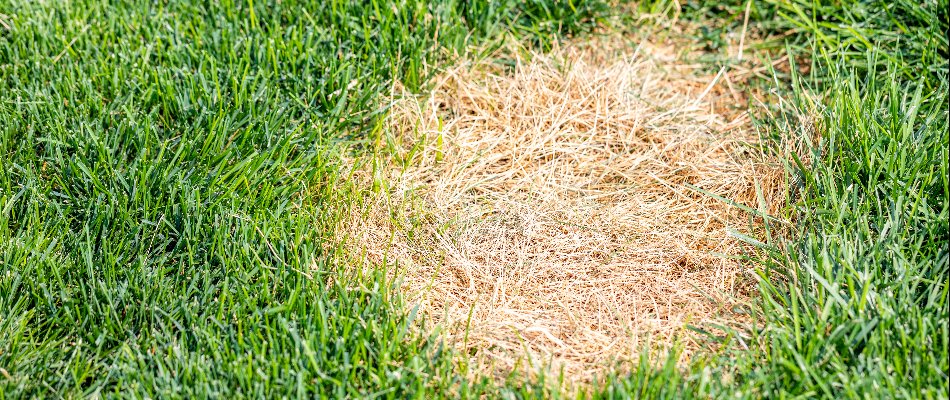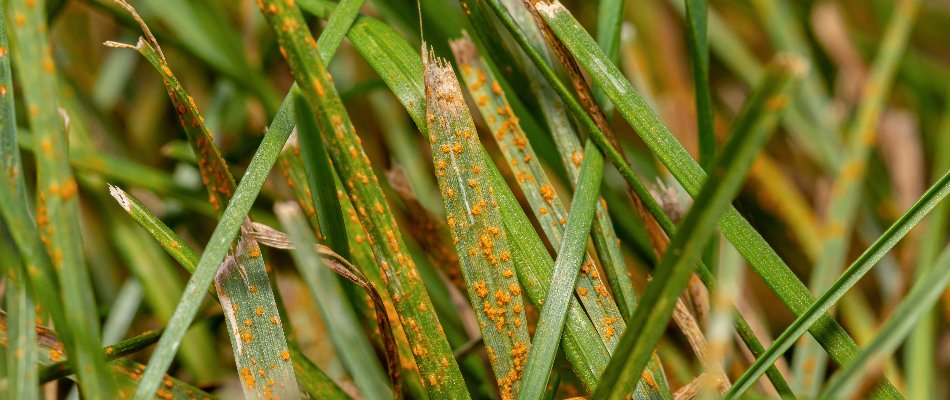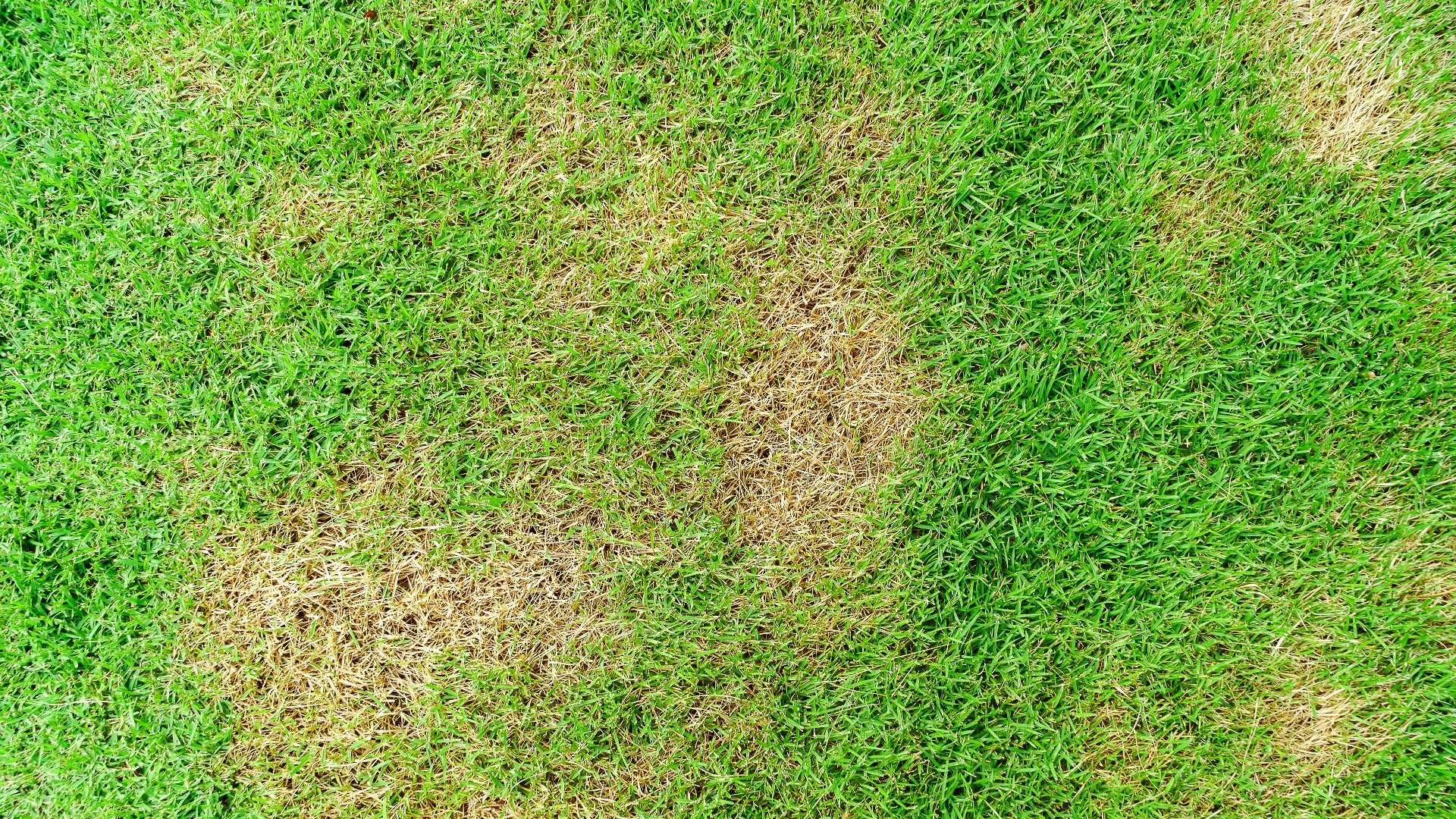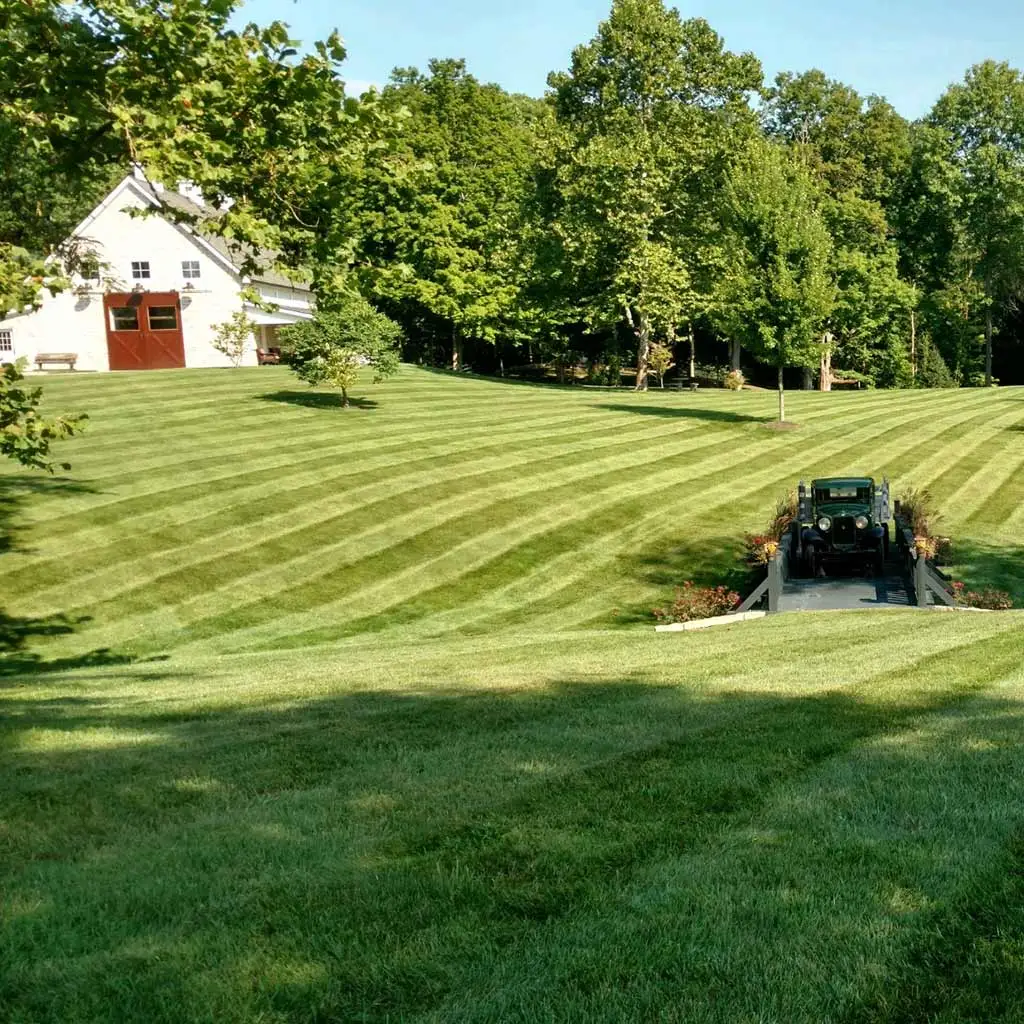Lawn diseases are a common problem for property owners in Ohio. Three of the most common lawn diseases in our area are dollar spot, red thread, and rust. Dollar spot thrives in warm, humid weather and is often the result of lawns being underwatered or improperly fertilized. Red thread, which is also common in warm, humid weather, is usually caused by lawns being mowed too short or having poor drainage. Rust, on the other hand, develops in lawns that are overwatered or have poor air circulation. If you suspect your lawn is infected with any of these diseases, you'll want to contact professionals immediately to schedule a curative treatment.
What is dollar spot, and what causes this lawn disease?

Dollar spot is a common lawn disease in Ohio that appears as small, circular patches of straw-colored grass. These patches are typically about the size of a silver dollar, hence the name. Dollar spot is caused by a fungus that thrives in warm, humid weather. It's most common in the spring and summer when temperatures are between 60 and 90 degrees Fahrenheit during the day and cool nights with heavy dew are present.
Dollar spot is often the result of lawns being underwatered or improperly fertilized. Underwatering can cause your grass to become stressed, making it more susceptible to dollar spot. Improper fertilization can also lead to dollar spot because your grass won't have enough nutrients to fight off the disease. To prevent dollar spot from developing on your lawn, you should water your lawn deeply but infrequently to encourage deep root growth. You should also fertilize your lawn regularly to provide it with the nutrients it needs to stay healthy.
What is red thread lawn disease, and how does it develop?

Red thread is another common lawn disease in Ohio that appears as thin, red threads growing from your grass blades. This disease is caused by a fungus that thrives in cool, damp weather. Like dollar spot, red thread is most common in the spring and fall when temperatures are between 60 and 75 degrees Fahrenheit.
Red thread is often the result of lawns being mowed too short or having poor drainage. Mowing your lawn too short can stress your grass, making it more susceptible to red thread. Poor drainage can also lead to red thread because excess moisture can promote fungal growth. To prevent red thread from developing on your lawn, you should mow your lawn at the proper height and ensure your lawn has adequate drainage.
What is rust, and how does this lawn disease develop?

Rust is a common lawn disease in Ohio that presents as orange or yellowish-brown powder on grass blades. Caused by fungal pathogens, rust thrives in cool, moist conditions—typically in late summer through fall when temperatures range from 60 to 75°F and moisture persists due to dew or shade.
This disease often develops when grass is stressed, especially from poor nutrition, compacted soil, or overwatering. While excess watering doesn’t directly cause rust, it can create damp conditions that encourage fungal growth. Poor air circulation can also trap moisture and worsen the issue.
To help prevent rust, mow at the proper height, water deeply but infrequently to encourage strong root systems, and improve airflow across your lawn by trimming back dense landscaping.
Call us today to sign up for our lawn disease control service!
If your lawn is suffering from a disease, we can help! At Hoffmans Lawn & Fertilization, a lawn disease control service is offered that is designed to eliminate various lawn diseases, including dollar spot, red thread, rust, and more. Preventative treatments are also offered to get ahead of these diseases.
We offer this service to residential and commercial property owners, as well as HOAs, in Delaware, OH, and surrounding areas such as Lewis Center and Powell. Give us a call today at (740) 318-5296 to sign up for our lawn disease control service.




Comments (0)
Thanks for your comment!
Thanks for your feedback! Your comments have been successfully submitted! Please note, all comments require admin approval prior to display.
Error submitting comment!
There is a problem with your comment, please see below and try again.